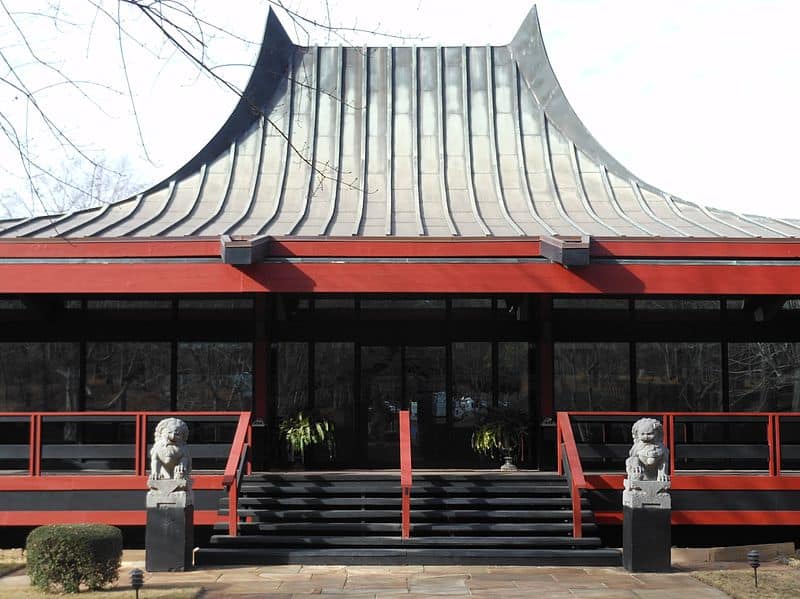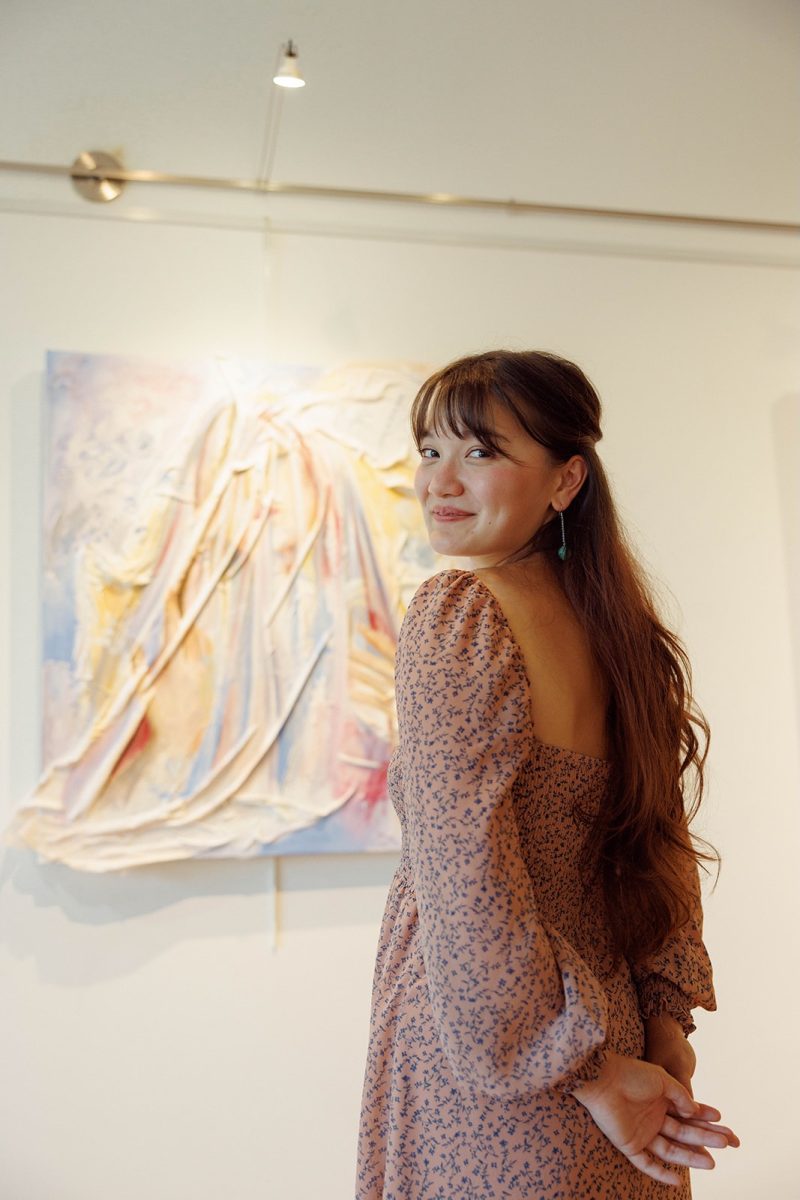The Tuscaloosa Museum of Art’s imperial Japanese building style and green gardens are a bold contrast to the brick and white trim architecture typical to Tuscaloosa. Inside the building, the painting “Boy Standing in Tall Grasses” is displayed as part of the Westervelt Collection, which is composed of the personal collections of the late Westervelt Company CEO Jack Warner. The collection has showcased notable American artists such as Edward Hopper and John Singer Sargent.
“Boy Standing in Tall Grasses” is attributed to Mary Cassatt, the famed painter and printmaker who famously befriended Edgar Degas, and upon further research, is perhaps just as interesting as the museum’s visually distinct exterior.
As the title suggests, “Boy Standing in Tall Grasses,” depicts a young boy standing in a grassy field. While it’s attributed to Cassatt, a legendary American impressionist, it is unsigned and atypical of her usual painting style. It stands out due to a technique that was slightly uncharacteristic of Cassatt, said award-winning author Lois V. Harris, who has written several books including “Mary Cassatt: Impressionist Painter.”
“Cassatt was known for using soft, pastel colors,” Harris said. “The grass in the painting is very bright green and bold. That just jumped out at me as not being something Cassatt would choose.”
Although “Boy Standing in Tall Grasses” is not included in Cassatt’s catalogue raisonné, the comprehensive listing of an artist’s works, that alone does not necessarily warrant the work as inauthentic.
Tuscaloosa Museum of Art administrative services coordinator Kathie Thurman also found indiscretions in the painting.
“If you look at the boy himself, it’s very Cassatt,” Thurman said. “However when you look at the surrounding grasses it’s kind of ‘muddied,’ meaning it’s not as clear or clean as you would believe a Cassatt to be.”
Harris explored the possibility that the painting could be a portrayal of one of Cassatt’s nephew’s, Robert Kelso Cassatt.
“The first thing that I noticed was the child’s face,” Harris said. “There was something very familiar about the face.”
Harris suggested that “Boy Standing in Tall Grasses” depicts Robert Kelso Cassatt as a toddler, and could have been painted years before “Portrait of Alexander J. Cassatt and His Son, Robert Kelso Cassatt,” (1884) where he is portrayed as a young boy, around the age of 8 or 10.
Another Cassatt portrait, “Master Robert Kelso Cassatt,” (1882) depicts Robert at a slightly younger age than the 1884 portrait in which he is pictured with his father. Thurman said the date of “Boy Standing in Tall Grasses” is undetermined.
“If you look very closely at the chin and shape of the face, there is something very similar there,” Harris said. “Mary Cassatt was known for painting her nieces and nephews because she didn’t have any children of her own.”
Cassatt was originally from Pennsylvania, but spent the majority of her career in France, studying and working with other greats of the Impressionist movement.
“Cassatt was one of the artists who came forward and began to mold the Impressionist aesthetic,” said UA art history professor Lucy Curzon.
All things considered, some suggest that uncertainty is inevitable in the collection of artworks.
“The only person who can absolutely authenticate a work is the person who created it themselves,” Curzon said. “The difference between an authentic work of art and non-authentic ‘in-the-school-of’ artwork is very difficult to determine.”
Cassatt’s contributions to the Impressionist movement were especially significant considering that she was one of the great successful female artists of the 19th century.
“Impressionism is one of the first modern aesthetics where you have a critical mass of women actually gain a great deal of prestige and fame,” Curzon said.
Curzon also described the Westervelt Collection as its own canon of American art.
“Warner had a very acute sense of value,” Curzon said. “His collection reflects ideas of national and cultural identity, and the fact that this was all happening in Tuscaloosa, Alabama is quite remarkable.”
Art history major Taylor Murray described The Westervelt Collection as “one of the greatest collections of American art in the country.” Murray, a senior double majoring in art history and advertising, works as a gallery attendant at the Sarah Moody Gallery of Art and the Sella-Granata Art Gallery.
“It is an asset to have the Westervelt Collection so close to the University, and so tied to Tuscaloosa history,” Murray said.
The origin of “Boy Standing in Tall Grasses” is mysterious and thought-provoking but is nonetheless an intriguing addition to the Tuscaloosa Museum of Art’s collections.
“I think that the collection is significant to the city, in that it brings some of the outside world and history of our country into our community,” Thurman said. “I believe that art is one of the tools that we can use to help educate our community and our students.”







